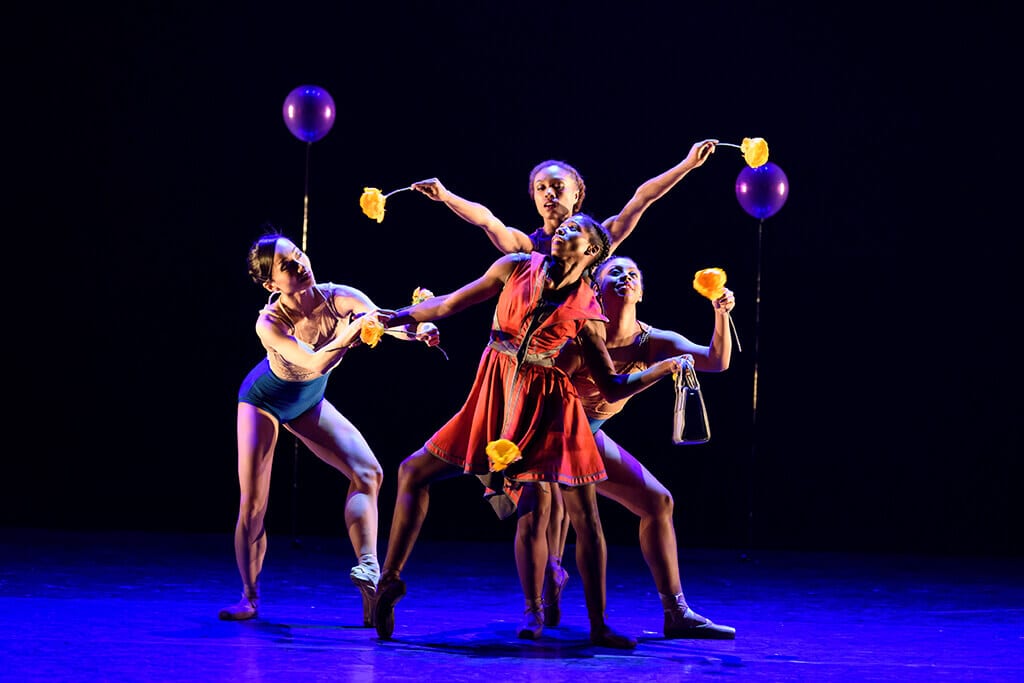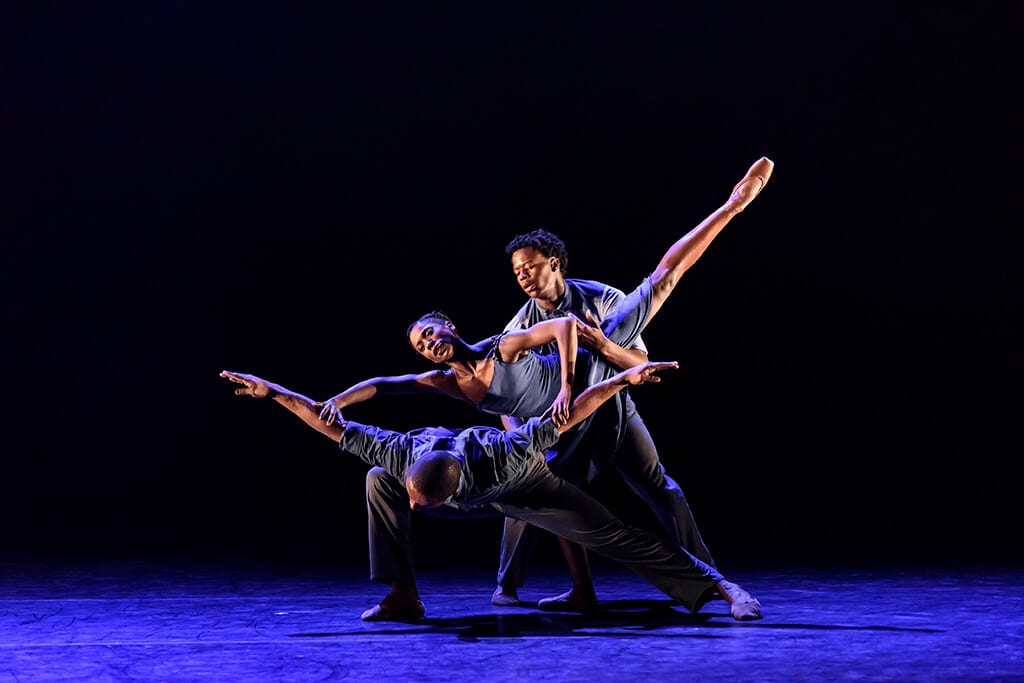Ballet Black was established sixteen years ago by Cassa Pancho to offer on- and off-stage professional opportunities for black and Asian performers, which might in turn arouse a confidence and involvement at the grass roots too. However, any ballet company needs to be judged on its artistic excellence as well as its community outreach, and the hugely varied and demanding triple bill presented in a brief run at the Barbican left no doubt about the ambition and achievement of the former as much as the commendable success of the latter.
The first ballet, House of Dreams, a delicate classical appetiser by Michael Corder, was a new work. It offered a spry and technically assured sequence of four contrasted movements for two pairs of dancers, set to the piano music of Debussy. There were plenty of crisp lifts, supple and elegant entwining of body shapes, and moments of fluent, sentimental bonding entirely in tune with the gentle, dappled elegance of the music, in which the composer harks back to the eighteenth-century world of Watteau and the Commedia dell’arte.
The dark, spiky, percussive lines of Shostakovich’s Eleventh String Quartet provided a very different aesthetic world in Martin Lawrance’s Captured (2012). Once more the seven short movements provided opportunities for two pairs of dancers, but the style could not have been more different. There was still an edgy elegance, but alongside a stark expressionist antagonism between the dancers. Confrontation rather than companionship: with a repertory of straining movements closer in their aspiration and desperation to Picasso than to the polite formalism of what had gone before. The precision and passion of the dancers was hugely impressive, generating a real tension in the audience amid the subdued ominous lighting scheme.
The final and longest ballet, Red Riding Hood, once more provided a very different form of aesthetic and dynamic appeal, with plenty of humour and story-telling of an original kind instead of abstraction. While indebted to the familiar fairy story it introduced some very different twists, partly of a violent dystopian kind that pulled the ballet in the direction of sacrificial violence of The Rite of Spring. However, there were some sprightly feminist angles too, as well as knockabout humour at Grandma’s knicker-bockered expense. At the heart of the ballet was some peerless dancing from Cira Robinson in the title role, and Mthuthuzeli November as a Wolf with a cowboy’s swagger and a tail like a lasso. There was a real sizzle and daring to their shared dancing that induced a rare stillness of concentration in the audience. The ensemble dancing, whether of flower maidens or pack wolves, was both tight, pacy, and enchanting. A variety of modern composers provided the musical backdrop and structure to the piece, offering a zany diversity of mood and timbre that suited the many sharply edited contrasts of the choreography, which combined both romance, violence and sexual bravado.
The broader attention to detail in production values was also outstanding, especially in the relationship between David Plater’s subtle lighting schemes and the carefully blended match of texture and colour in the costumes. Exquisite two-toned silks evoked the sylvan shadows of the Debussy. Stark blues and greys, lit up with golden highlights, lent a lustrous glow to the Shostakovich; and a wicked sense of invention in mask and costume conferred humour and grotesquery on the forest world of Red Riding Hood.
This was an altogether outstanding evening: an admirably varied and testing, showcase for the all-round talents of this remarkable company. The sense of a special occasion was reflected in the buzz among the audience at the end amid a desire for a return visit before long.



